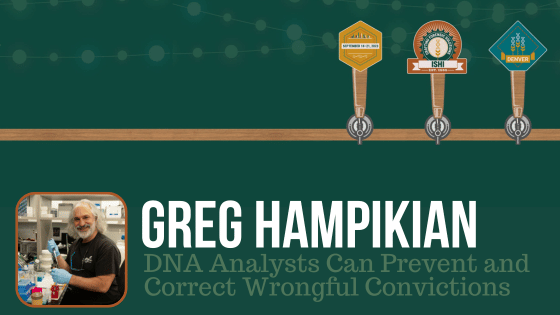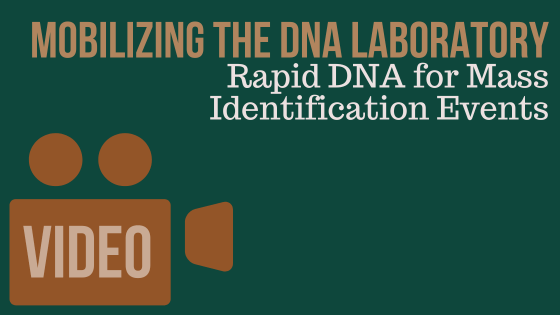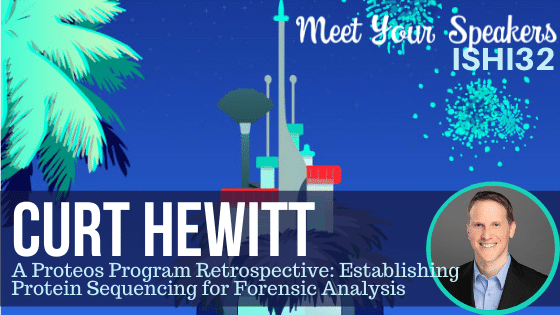Breaking Barriers in Forensics: Anna Barbaro on Empowering Women and Demystifying True Crime

How do we empower women in forensic science while bridging the gap between true crime media and reality? At #ISHI35, Dr. Anna Barbaro, President of the Worldwide Association of Women Forensic Experts (WAWFE), shared her mission to support women in forensics globally, especially in developing countries. In this inspiring interview, Dr. Barbaro discusses: 🌍 The […]
Under the Microscope – Meradeth Houston Snow

The intersection between identifying human remains that may be of Native American ancestry, and genetic testing, is one that is fraught with misunderstandings and cultural insensitivities. As the numbers of missing and murdered Indigenous persons (MMIP) continues to rise, the ability to bridge the world of forensic identification and cultural respect is becoming one that […]
Under the Microscope 2023 – Greg Hampikian

The National Registry of Exonerations reported that misleading forensic evidence is a prominent factor in wrongful convictions. Because DNA evidence resonates with jurors, even small mistakes have large effects. For example, when male DNA is reported in a “sperm fraction”—even though no sperm are present—the profile is referred to as “sperm DNA” by lawyers and […]
Mobilizing the DNA Laboratory: Rapid DNA for Mass Identification Events

Nothing taught the forensic DNA community, arguably the world, more about mass identification than the terrorist attacks that occurred on September 11, 2001. This singular event solidified DNA’s role in the identification of those who could not identify themselves. The use of DNA analysis in this, and other like events, has become a pivotal and […]
Under the Microscope – Ray Wickenheiser

DNA databases have been very effective at developing investigative leads, providing new suspects for unsolved forensic cases. To date, the majority of forensic laboratories utilize DNA databases with direct matching, where forensic profiles found at crime scenes are compared to profiles from known individuals and must match exactly. Expanding the size of a law enforcement […]
Lessons Learned from Implementing and Operating a Rapid DNA Program on the United States Border

Since early 2018, the Department of Homeland Security (DHS) has encountered a migration crisis at the southern border, including an increase in fraudulent family relationship claims. To help address this, Bode Technology developed, deployed, and operated a wide-ranging program for DHS to utilize Rapid DNA to identify and deter possible child trafficking by identifying fraudulent […]
Under the Microscope – Jennifer Cihlar

Massively parallel sequencing (MPS) technologies have been extensively evaluated by forensic genomic Research and Development laboratories for the past ten years. Results from these studies have routinely demonstrated the benefits afforded by use of these enhanced technologies and have helped progress the adoption of MPS in forensic genomic laboratories that process biological evidence. The commercial […]
Under the Microscope – Dane Plaza

Rapid DNA technology can provide investigators with real-time investigative information, enhance border security and public safety, aid in prevention and detection of human trafficking, and provide identifications in mass casualty events. While Rapid DNA was designed for operation by non-technical field personnel, it is important to be implemented properly with the complementary support of trained […]
Under the Microscope – Curt Hewitt

For the past three years, Signature Science has been working on the IARPA PROTEOS program to demonstrate that protein sequencing can successfully be used for human forensic identification for samples where DNA was either absent or degraded, specifically touch samples. Together with the University of North Texas Health Science Center and The Ohio State University, […]

